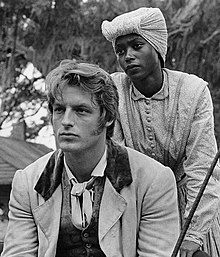
The Mann Act, previously called the White-Slave Traffic Act of 1910, is a United States federal law, passed June 25, 1910. It is named after Congressman James Robert Mann of Illinois.

Uncle Tom's Cabin; or, Life Among the Lowly is an anti-slavery novel by American author Harriet Beecher Stowe. Published in two volumes in 1852, the novel had a profound effect on attitudes toward African Americans and slavery in the U.S., and is said to have "helped lay the groundwork for the [American] Civil War".
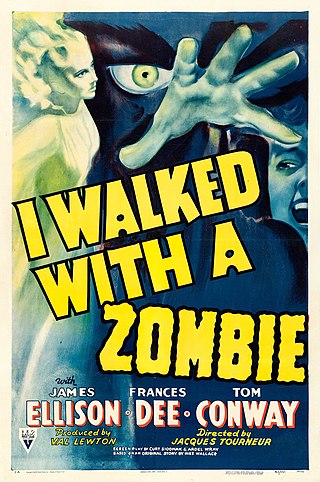
I Walked with a Zombie is a 1943 American horror film directed by Jacques Tourneur and produced by Val Lewton for RKO Pictures. It stars James Ellison, Frances Dee, and Tom Conway, and follows a Canadian nurse who travels to care for the ailing wife of a sugar plantation owner in the Caribbean, where she witnesses Vodou rituals and possibly encounters the walking dead. The screenplay, written by Curt Siodmak and Ardel Wray, is based on an article of the same title by Inez Wallace, and also partly reinterprets the narrative of the 1847 novel Jane Eyre by Charlotte Brontë.
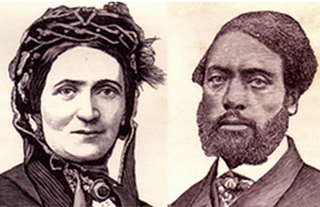
Ellen Craft (1826–1891) and William Craft were American abolitionists who were born into slavery in Macon, Georgia. They escaped to the Northern United States in December 1848 by traveling by train and steamboat, arriving in Philadelphia on Christmas Day. Ellen crossed the boundaries of race, class, and gender by passing as a white planter with William posing as her servant. Their escape was widely publicized, making them among the most famous fugitive slaves in the United States. Abolitionists featured them in public lectures to gain support in the struggle to end the institution.

Drum is a 1976 American film based on the 1962 Kyle Onstott novel of the same name. It was released by United Artists and is a sequel to the film Mandingo, released in 1975. The film stars Warren Oates, Pam Grier and Ken Norton, and was directed by Steve Carver.

Mandingo is a novel by Kyle Onstott, published in 1957. The book is set in the 1830s in the Antebellum South primarily around Falconhurst, a fictional plantation in Alabama owned by the planter Warren Maxwell. The narrative centers on Maxwell, his son Hammond, and the Mandingo slave Ganymede, or Mede. Mandingo is a tale of cruelty toward the black people of that time and place, detailing the overwhelmingly dehumanizing behavior meted out to the slaves, as well as vicious fights, poisoning, and violent death. The novel was made into a film of the same name in 1975.

James Henry Hammond was an American attorney, politician, and planter. He served as a United States representative from 1835 to 1836, the 60th Governor of South Carolina from 1842 to 1844, and a United States senator from 1857 to 1860. A slave owner, he is considered one of the strongest supporters of slavery in the years before the American Civil War.
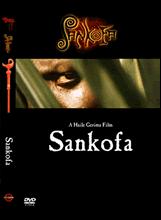
Sankofa is a 1993 Ethiopian-produced drama film directed by Haile Gerima centered on the Atlantic slave trade. The storyline features Oyafunmike Ogunlano, Kofi Ghanaba, Mutabaruka, Alexandra Duah, and Afemo Omilami. The word Sankofa derives its meaning from the Ghanaian Akan language which means to "go back, look for, and gain wisdom, power and hope," according to Dr. Anna Julia Cooper. The word Sankofa stresses the importance of one not drifting too far away from one's past in order to progress in the future. In the film, Sankofa is depicted by a bird and the chants and drumming of a Divine Drummer. Gerima's film showed the importance of not having people of African descent drift far away from their African roots. Gerima used the journey of the character Mona to show how the African perception of identity included recognizing one's roots and "returning to one’s source" (Gerima).
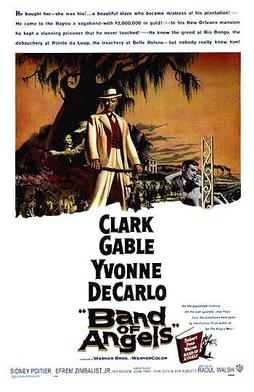
Band of Angels is a 1957 American psychological drama film set in the American South before and during the American Civil War, based on the 1955 novel of the same title by Robert Penn Warren. It starred Clark Gable, Yvonne De Carlo and Sidney Poitier. The movie was directed by Raoul Walsh.
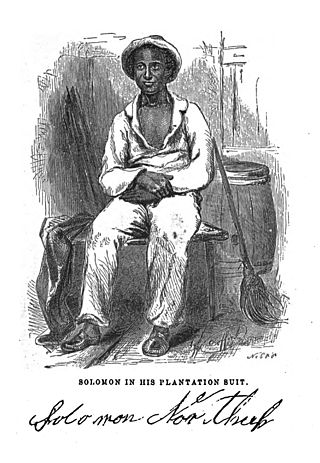
Twelve Years a Slave is an 1853 memoir and slave narrative by Solomon Northup as told to and written by David Wilson. Northup, a black man who was born free in New York state, details himself being tricked to go to Washington, D.C., where he was kidnapped and sold into slavery in the Deep South. He was in bondage for 12 years in Louisiana before he was able to secretly get information to friends and family in New York, who in turn secured his release with the aid of the state. Northup's account provides extensive details on the slave markets in Washington, D.C., and New Orleans, and describes at length cotton and sugar cultivation and slave treatment on major plantations in Louisiana.

The institution of slavery in North America existed from the earliest years of the colonial history of the United States until 1865 when the Thirteenth Amendment abolished slavery throughout the United States except as punishment for a crime. It was also abolished among the sovereign Indian tribes in Indian Territory by new peace treaties which the US required after the Civil War.
Mary Hemings Bell was born into slavery, most likely in Charles City County, Virginia, as the oldest child of Elizabeth Hemings, a mixed-race slave held by John Wayles. After the death of Wayles in 1773, Elizabeth, Mary, and her family were inherited by Thomas Jefferson, the husband of Martha Wayles Skelton, a daughter of Wayles, and all moved to Monticello.

Blaxploitation is an ethnic subgenre of the exploitation film that emerged in the United States during the early 1970s, after the demand of the Black Panthers for black artists to reclaim the power and rights to their image from the UCLA, and the new rating system within Hollywood allowed up and coming black film makers and actors to create black films for black audiences. The term, a portmanteau of the words "black" and "exploitation", was coined in August 1972 by Junius Griffin, the president of the Beverly Hills–Hollywood NAACP branch. He claimed the genre was "proliferating offenses" to the black community in its perpetuation of stereotypes often involved in crime. After the race films of the 1940s and 1960s, the genre emerged as one of the first in which black characters and communities were protagonists, rather than sidekicks, supportive characters, or victims of brutality. The genre's inception coincides with the rethinking of race relations in the 1970s.

Slavery in Virginia began with the capture and enslavement of Native Americans during the early days of the English Colony of Virginia and through the late eighteenth century. They primarily worked in tobacco fields. Africans were first brought to colonial Virginia in 1619, when 20 Africans from present-day Angola arrived in Virginia aboard the ship The White Lion.
Kyle Elihu Onstott was an American novelist, known for his best-selling novel Mandingo (1957), which deals with slavery on an Alabama plantation with the fictional name of Falconhurst in the 1830s. The book was made into a 1961 play and film of the same name, which was released in 1975.

Django Unchained is a 2012 American revisionist Western film written and directed by Quentin Tarantino, starring Jamie Foxx, Christoph Waltz, Leonardo DiCaprio, Kerry Washington, and Samuel L. Jackson, with Walton Goggins, Dennis Christopher, James Remar, Michael Parks, and Don Johnson in supporting roles. Set in the Old West and Antebellum South, it is a highly stylized, heavily revisionist tribute to spaghetti Westerns, in particular the 1966 Italian film Django by Sergio Corbucci. The story follows a slave who trains under a German bounty hunter with the ultimate goal of reuniting with his wife.

The treatment of slaves in the United States sometimes included sexual abuse and rape, the denial of education, and punishments like whippings. Families were often split up by the sale of one or more members, usually never to see or hear of each other again.

12 Years a Slave is a 2013 biographical drama film directed by Steve McQueen from a screenplay by John Ridley, based on the 1853 slave memoir Twelve Years a Slave by Solomon Northup, an African American man who was kidnapped in Washington, D.C. by two conmen in 1841 and sold into slavery. He was put to work on plantations in the state of Louisiana for 12 years before being released. The first scholarly edition of David Wilson's version of Northup's story was co-edited in 1968 by Sue Eakin and Joseph Logsdon.

Slave Play is a three-act play by Jeremy O. Harris about race, sex, power relations, trauma, and interracial relationships. It follows three interracial couples undergoing "Antebellum Sexual Performance Therapy" because the black partners no longer feel sexual attraction to their white partners. The title refers both to the history of slavery in the United States and to sexual slavery role-play.
Jonas Mohammed Bath was a community and religious leader during the nineteenth century in Trinidad. Born in West Africa, he was enslaved and transported to Trinidad in 1804 or 1805. He was able to purchase his freedom, and went on to be leader of the Mandingo population in Trinidad and was described as "chief priest and patriarch" of the entire Muslim population of the colony. Bath petitioned the British government to repatriate the Mandingo community to Africa in 1833 and 1838, but both petitions were rejected.

